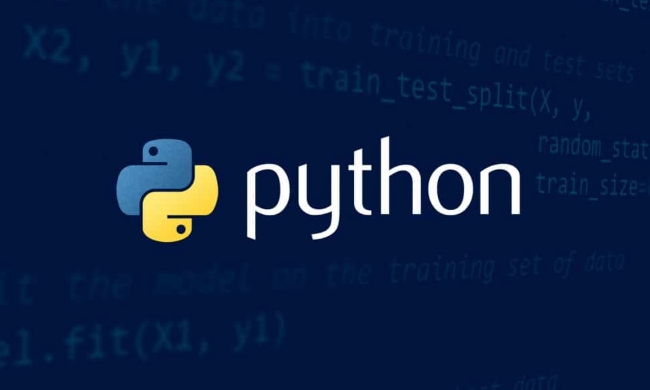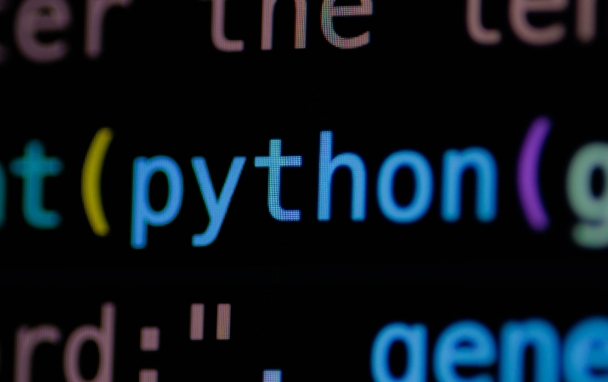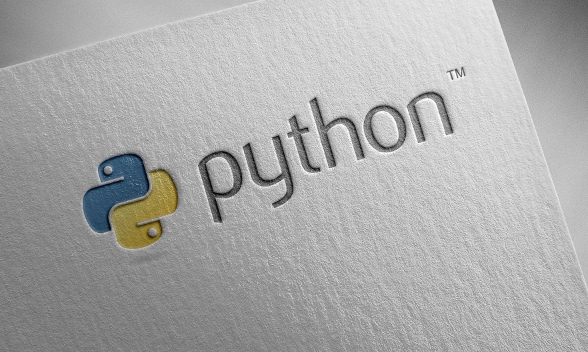 Backend Development
Backend Development
 Python Tutorial
Python Tutorial
 Serializing and Deserializing Objects Using Python's Pickle Module
Serializing and Deserializing Objects Using Python's Pickle Module
Serializing and Deserializing Objects Using Python's Pickle Module
Jul 12, 2025 am 02:04 AMPickle is a module in the Python standard library for serializing and deserializing objects. It can convert almost any Python object into a byte stream for storage or transmission, and is suitable for scenarios such as saving model training results, cache calculation results, and passing complex data. When using it, you need to serialize the object to the file (write in binary mode) through pickle.dump() and restore the object from the file (also read in binary mode) through pickle.load(). Notes include: make sure that the file is opened in binary mode, the loading content should come from a trusted source, and the custom class instance needs to be imported into the definition in advance. Some objects such as file handles or some C extension objects cannot be serialized directly. You can clean up non-serialized parts, implement getstate and setstate methods, or use alternatives such as JSON and dill instead. You can also call dump() and load() multiple times to handle multiple objects.

Direct answer title:
Python's pickle module provides an easy way to serialize and deserialize objects, suitable for saving and recovering data between program runs.

What is a Pickle?
Pickle is a module in the Python standard library that converts nearly any Python object into a byte stream that can be stored in a file or transferred over a network. This process is called "serializing". In turn, the process of restoring the original object from a byte stream is called "deserializing".

Use scenarios include:
- Save model training results (such as machine learning models)
- Cache calculation results to speed up subsequent execution
- Passing data of complex structures between different processes or machines
It should be noted that Pickle is not cross-language compatible and can only be used internally in Python.

How to use Pickle for serialization?
To save an object to a file, you can use pickle.dump() method:
import pickle
data = {
'name': 'Alice',
'age': 30,
'skills': ['Python', 'Data Analysis']
}
with open('data.pkl', 'wb') as f:
pickle.dump(data, f)A few suggestions:
- The file must be opened in binary mode (
'wb'), otherwise an error will be reported - Data types are not limited to dictionaries, lists, class instances, etc. can be picked up.
- If the object contains functions or lambda expressions, make sure they do not depend on external state, otherwise it may fail when loading
How to deserialize Pickle data?
It is also very simple to read the saved object, use pickle.load() :
with open('data.pkl', 'rb') as f:
loaded_data = pickle.load(f)
print(loaded_data)
# Output: {'name': 'Alice', 'age': 30, 'skills': ['Python', 'Data Analysis']}Notes:
- Also use binary mode (
'rb') to open the file - The loaded content should come from a trusted source, because maliciously constructed pickle data may cause arbitrary code execution
- If you pickle an instance of a custom class, remember to import the class definition before loading, otherwise an error will be reported
Some tips and details about Pickle
Sometimes you will encounter some situations where objects cannot be picked, such as:
- Object containing an open file handle or database connection
- Some library objects that use C extensions and do not implement the pickle protocol (such as some special cases of NumPy arrays)
At this time you can consider:
- Clean up the non-serialized parts of the object and save them
- Implement the
__getstate__and__setstate__methods to customize serialization behavior - Or use other formats, such as JSON (suitable for basic types) and dill (support more types)
In addition, if you need to dump multiple objects to the same file at once, you can call dump() multiple times, and load() multiple times when reading.
Basically that's it.
The above is the detailed content of Serializing and Deserializing Objects Using Python's Pickle Module. For more information, please follow other related articles on the PHP Chinese website!

Hot AI Tools

Undress AI Tool
Undress images for free

Undresser.AI Undress
AI-powered app for creating realistic nude photos

AI Clothes Remover
Online AI tool for removing clothes from photos.

Clothoff.io
AI clothes remover

Video Face Swap
Swap faces in any video effortlessly with our completely free AI face swap tool!

Hot Article

Hot Tools

Notepad++7.3.1
Easy-to-use and free code editor

SublimeText3 Chinese version
Chinese version, very easy to use

Zend Studio 13.0.1
Powerful PHP integrated development environment

Dreamweaver CS6
Visual web development tools

SublimeText3 Mac version
God-level code editing software (SublimeText3)

Hot Topics
 How does Python's unittest or pytest framework facilitate automated testing?
Jun 19, 2025 am 01:10 AM
How does Python's unittest or pytest framework facilitate automated testing?
Jun 19, 2025 am 01:10 AM
Python's unittest and pytest are two widely used testing frameworks that simplify the writing, organizing and running of automated tests. 1. Both support automatic discovery of test cases and provide a clear test structure: unittest defines tests by inheriting the TestCase class and starting with test\_; pytest is more concise, just need a function starting with test\_. 2. They all have built-in assertion support: unittest provides assertEqual, assertTrue and other methods, while pytest uses an enhanced assert statement to automatically display the failure details. 3. All have mechanisms for handling test preparation and cleaning: un
 How does Python handle mutable default arguments in functions, and why can this be problematic?
Jun 14, 2025 am 12:27 AM
How does Python handle mutable default arguments in functions, and why can this be problematic?
Jun 14, 2025 am 12:27 AM
Python's default parameters are only initialized once when defined. If mutable objects (such as lists or dictionaries) are used as default parameters, unexpected behavior may be caused. For example, when using an empty list as the default parameter, multiple calls to the function will reuse the same list instead of generating a new list each time. Problems caused by this behavior include: 1. Unexpected sharing of data between function calls; 2. The results of subsequent calls are affected by previous calls, increasing the difficulty of debugging; 3. It causes logical errors and is difficult to detect; 4. It is easy to confuse both novice and experienced developers. To avoid problems, the best practice is to set the default value to None and create a new object inside the function, such as using my_list=None instead of my_list=[] and initially in the function
 How do list, dictionary, and set comprehensions improve code readability and conciseness in Python?
Jun 14, 2025 am 12:31 AM
How do list, dictionary, and set comprehensions improve code readability and conciseness in Python?
Jun 14, 2025 am 12:31 AM
Python's list, dictionary and collection derivation improves code readability and writing efficiency through concise syntax. They are suitable for simplifying iteration and conversion operations, such as replacing multi-line loops with single-line code to implement element transformation or filtering. 1. List comprehensions such as [x2forxinrange(10)] can directly generate square sequences; 2. Dictionary comprehensions such as {x:x2forxinrange(5)} clearly express key-value mapping; 3. Conditional filtering such as [xforxinnumbersifx%2==0] makes the filtering logic more intuitive; 4. Complex conditions can also be embedded, such as combining multi-condition filtering or ternary expressions; but excessive nesting or side-effect operations should be avoided to avoid reducing maintainability. The rational use of derivation can reduce
 How can Python be integrated with other languages or systems in a microservices architecture?
Jun 14, 2025 am 12:25 AM
How can Python be integrated with other languages or systems in a microservices architecture?
Jun 14, 2025 am 12:25 AM
Python works well with other languages ??and systems in microservice architecture, the key is how each service runs independently and communicates effectively. 1. Using standard APIs and communication protocols (such as HTTP, REST, gRPC), Python builds APIs through frameworks such as Flask and FastAPI, and uses requests or httpx to call other language services; 2. Using message brokers (such as Kafka, RabbitMQ, Redis) to realize asynchronous communication, Python services can publish messages for other language consumers to process, improving system decoupling, scalability and fault tolerance; 3. Expand or embed other language runtimes (such as Jython) through C/C to achieve implementation
 How can Python be used for data analysis and manipulation with libraries like NumPy and Pandas?
Jun 19, 2025 am 01:04 AM
How can Python be used for data analysis and manipulation with libraries like NumPy and Pandas?
Jun 19, 2025 am 01:04 AM
PythonisidealfordataanalysisduetoNumPyandPandas.1)NumPyexcelsatnumericalcomputationswithfast,multi-dimensionalarraysandvectorizedoperationslikenp.sqrt().2)PandashandlesstructureddatawithSeriesandDataFrames,supportingtaskslikeloading,cleaning,filterin
 What are dynamic programming techniques, and how do I use them in Python?
Jun 20, 2025 am 12:57 AM
What are dynamic programming techniques, and how do I use them in Python?
Jun 20, 2025 am 12:57 AM
Dynamic programming (DP) optimizes the solution process by breaking down complex problems into simpler subproblems and storing their results to avoid repeated calculations. There are two main methods: 1. Top-down (memorization): recursively decompose the problem and use cache to store intermediate results; 2. Bottom-up (table): Iteratively build solutions from the basic situation. Suitable for scenarios where maximum/minimum values, optimal solutions or overlapping subproblems are required, such as Fibonacci sequences, backpacking problems, etc. In Python, it can be implemented through decorators or arrays, and attention should be paid to identifying recursive relationships, defining the benchmark situation, and optimizing the complexity of space.
 How can you implement custom iterators in Python using __iter__ and __next__?
Jun 19, 2025 am 01:12 AM
How can you implement custom iterators in Python using __iter__ and __next__?
Jun 19, 2025 am 01:12 AM
To implement a custom iterator, you need to define the __iter__ and __next__ methods in the class. ① The __iter__ method returns the iterator object itself, usually self, to be compatible with iterative environments such as for loops; ② The __next__ method controls the value of each iteration, returns the next element in the sequence, and when there are no more items, StopIteration exception should be thrown; ③ The status must be tracked correctly and the termination conditions must be set to avoid infinite loops; ④ Complex logic such as file line filtering, and pay attention to resource cleaning and memory management; ⑤ For simple logic, you can consider using the generator function yield instead, but you need to choose a suitable method based on the specific scenario.
 What are the emerging trends or future directions in the Python programming language and its ecosystem?
Jun 19, 2025 am 01:09 AM
What are the emerging trends or future directions in the Python programming language and its ecosystem?
Jun 19, 2025 am 01:09 AM
Future trends in Python include performance optimization, stronger type prompts, the rise of alternative runtimes, and the continued growth of the AI/ML field. First, CPython continues to optimize, improving performance through faster startup time, function call optimization and proposed integer operations; second, type prompts are deeply integrated into languages ??and toolchains to enhance code security and development experience; third, alternative runtimes such as PyScript and Nuitka provide new functions and performance advantages; finally, the fields of AI and data science continue to expand, and emerging libraries promote more efficient development and integration. These trends indicate that Python is constantly adapting to technological changes and maintaining its leading position.





